LeEco Announces New Le 2, Le 2 Pro, and LeMax 2
by Andrei Frumusanu on April 20, 2016 7:45 AM EST- Posted in
- Smartphones
- Mobile
- LeEco
- LeMax
- Le

Today in Beijing we had the opportunity to attend LeEco's presentation event announcing their new flagship smartphone devices. LeEco has been a company we haven't had the chance to cover to date, yet the company is making a lot of noise and positioning itself against its competition in the smartphone space and beyond. Today's event was a 3 hour pandemonium where among other things we saw the launch of a new smart-TV as well as Le's first public demonstration of their electric car.
But getting to the topic at hand, LeEco has been making a concerted push into the smartphone space. And today they are updating their smartphone lineup with a trio of devices all appropriately suffixed as 2. These are the Le 2, the Le 2 Pro, and the LeMax 2.
| LeEco Le 2, Le 2 Pro & LeMax 2 | |||
| Le 2 | Le 2 Pro | Le Max 2 | |
| SoC | Helio X20 2x A72 @ 2.3GHz 4x A53 @ 2.0GHz 4x A53 @ 1.4GHz Mali T880MP4 @ 780MHz |
Helio X25 2x A72 @ 2.5GHz 4x A53 @ 2.0GHz 4x A53 @ 1.4GHz Mali T880MP4 @ 850MHz |
Snapdragon 820 2x Kryo @ 1.59GHz 2x Kryo @ 2.15GHz Adreno 530 @ 625MHz |
| RAM | 3GB LPDDR3-1866 | 4GB LPDDR3-1866 | 4/6GB LPDDR4-3733 |
| NAND | 32GB eMMC 5.1 NAND | 32/64GB UFS 2.0 | |
| Display | 5.5" 1080p LCD | 5.7” 1440p LCD | |
| Modem | 2G/3G/4G LTE Cat 6 (Integrated MediaTek SoC Modem) |
2G/3G/4G LTE Cat 12 (Integrated Snapdragon X12 Modem) |
|
| Dimensions | 151.1 (h) x 74.2 (w) x 7.5 (d) mm 153g |
156.8 (h) x 77.6 (w) x 7.99 (d) mm 185g |
|
| Camera | Rear Camera 16MP w/ PDAF |
Rear Camera 21MP IMX230 w/ PDAF |
Rear Camera 21MP IMX230 w/ PDAF & OIS |
| Front Facing Camera 8MP 1.4µm pixels |
|||
| Battery | 3000mAh | 3100mAh | |
| Launch OS | Android 6.0 w/ EUI 5.8 | ||
| Connectivity | 802.11a/b/g/n/ac 2.4 & 5GHz BT 4.2, GPS/GNSS USB-C no 3.5mm headphone jack |
||
| SIM Size | NanoSIM + NanoSIM | ||
| Launch MSRP | RMB ¥1099 (USD~170, ~150€) |
RMB ¥1499 (USD~230, ~205€) |
4GB + 32GB RMB ¥2099 (USD~325, ~285€) 6GB + 64GB RMB ¥2499 (USD~385, ~340€) |
Starting at the flagship level, we have the LeMax 2. Based around Qualcomm’s popular Snapdragon 820, the 5.7” phablet’s spec sheet reads very similar to some of the other flagship phones we’ve seen launched this year. LeEco is pairing the 820 with 32 or 64GB of UFS 2.0 NAND, and as a first for any Android smartphone, up to 6GB of LPDDR4 RAM. To have the first 6GB phone show up here is admittedly unexpected, but given the prevalence of 3GB/4GB configurations elsewhere, it was only a matter of time until someone used higher capacity chips to get to 6GB.
Shifting gears, the display for the phone is a 1440p LCD, which will put it in competition with the likes of the Samsung Galaxy Note5 and S7 series, and the LG G5. The display subjectively looked good with high brightness and good viewing angles. Otherwise for image capture purposes, LeEco has outfitted the phone with a 21MP OIS-capable rear camera, utilizing Sony’s IMX230 sensor. As has been the case for a number of phones this generation, there is a sizable camera hump here to house the camera while keeping the rest of the phone relatively thin. Meanwhile front facing camera duties are handled by a 8MP camera with 1.4µm pixel pitch on the sensor.
Rounding out the package, LeEco is equipping the phone with a 3100mAh battery, and while we’re still working to get the precise battery voltage, at typical voltages we’d be looking at around a total capacity of 11.9WHr. Of course you’ll also find a full suite of wireless connectivity options enabled through the Snapdragon 820, including Qualcomm’s integrated X12 LTE modem, and dual-band 802.11a/b/g/n/ac support.
But perhaps the most notable aspect of this phone will be the I/O connectivity. That LeEco is using the increasingly common USB Type-C port is, if anything, to be expected. However what’s unexpected is that this is the only port; a 3.5mm audio jack is not present. Instead the company is piping out audio over the USB port and including a USB Type-C to 3.5mm audio adapter to maintain compatibility with standard headsets. Underlying the USB audio connection in turn is a brand-new technology LeEco is calling CDLA (Continual Digital Lossless Audio).
At this point it’s not entirely clear why LeEco went this route; the phone seems to be thick enough to accommodate the 3.5mm jack, so whether this was done for the purposes of giving the space to another feature (e.g. larger speakers) remains to be seen. What the company does claim though is that the audio quality through the CDLA headphones is vastly superior to the 3.5mm analog counterpart, and admittedly at first glance this claim is hard to buy into. I wasn't able to verify this and also unfortunately the devices come with no bundled stock headphones, making this a quite niche accessory.
LeEco will be offering two configurations of the LeMax 2. The 32GB NAND + 4GB RAM configuration will sell for ¥2099, or roughly $325. Otherwise the more spacious 64GB NAND + 6GB RAM configuration will sell for ¥2499 (~$385).
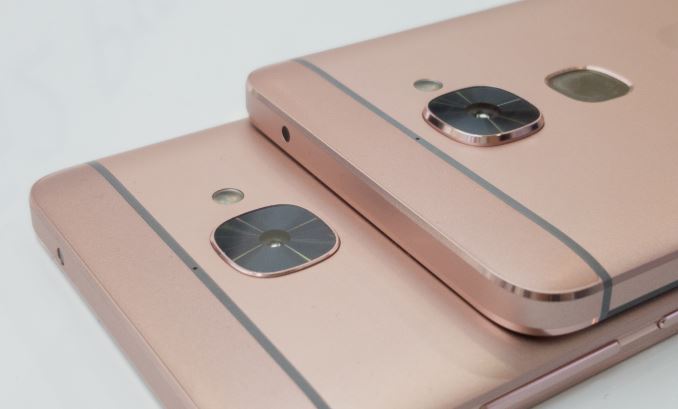
Le 2 (left) vs Le 2 Pro (right)
Below the LeMax 2 are the duo of Le 2 series phone, the Le 2 Pro and the simply named Le 2. Both of these phones share the same basic chassis and screen, incorporating a 1080p LCD in a 5.5” phablet form factor. The design is also the same as the LeMax 2 so except for the smaller camera bump on the basic Le 2 you wouldn't be able to tell the difference between the Le 2 Pro and the LeMax 2. The difference, as you might expect from the name, comes from the feature set and price.
Starting with the Le 2 Pro, this phone is based around MediaTek’s Helio X25 SoC, which offers 3 clusters of ARM Cortex CPUs – 2 A53 quad core clusters at different performance/power levels, and a dual core A72 cluster. The X25 in turn is paired with 4GB of LPDDR3 and 32GB of eMMC 5.1 NAND. Also setting it apart from its more basic counterpart is the rear camera module, which like the LeMax 2 is a 21MP camera utilizing Sony’s IMX230 sensor. However OIS doesn't seem to be available in this somewhat smaller phone.
As for the basic Le 2, this sees LeEco dropping down to the lower performance Helio X20 SoC, which cuts down on both the A72 cluster and GPU clockspeeds. The Le 2 gets a smaller 3GB of LPDDR3 RAM and the same 32GB of eMMC 5.1 NAND, however the camera module is a simpler 16MP camera utilizing a hereto-unknown sensor.
Otherwise both phones share identical specifications as far as all other features are concerned. The Helio SoC offers its own integrated Category 6 LTE modem, and both phones incorporate a 8MP front facing camera. And since both phones share the same chassis, both phones also come equipped with a 3000mAh battery. Finally, for I/O and connectivity both phones share the larger LeMax 2’s configuration: dual-band WiFi + Bluetooth 4.2 for wireless data, and the sole USB Type-C port for data and audio.
The Le 2 will be hitting the market at ¥1099 (~$170), while the more powerful Le 2 Pro adds another ¥400 to the price tag, bringing it to ¥1499 (~$230). Today's launch is a China-only launch, however LeEco is pointing out that in the future we'll be seeing focus on the US as its next target market outside of their established market in China and India with the possible introduction of derivative models with modifications to the specifications such as different SoC choices.


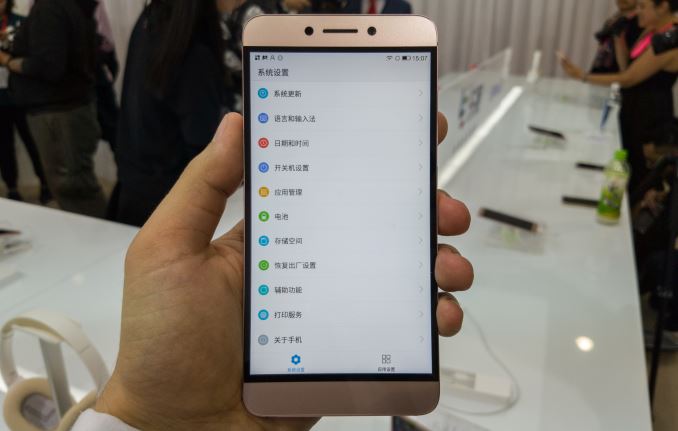

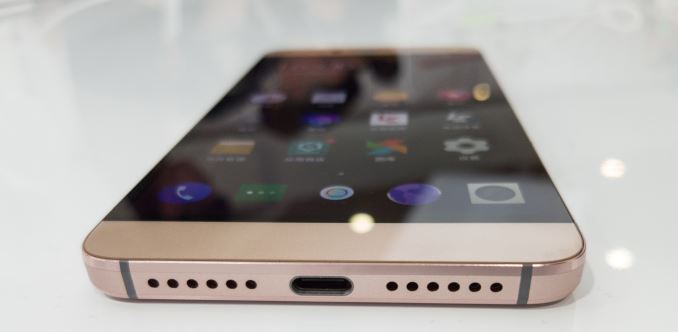
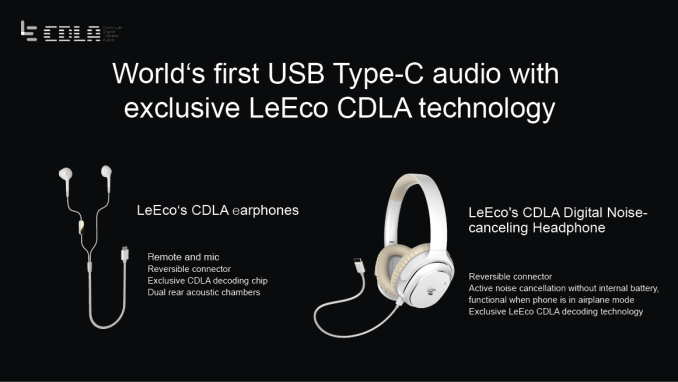
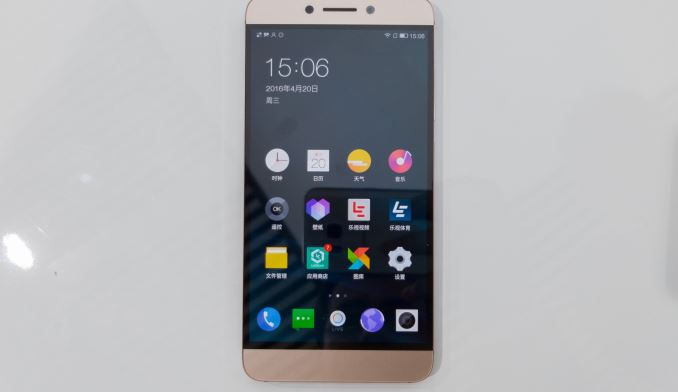
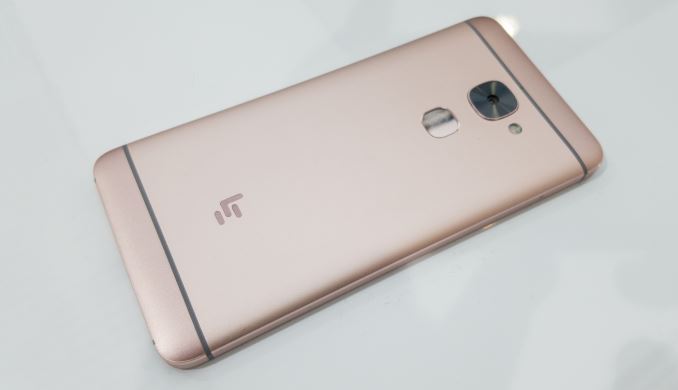














37 Comments
View All Comments
zanto - Wednesday, April 20, 2016 - link
@nightbringer57bluetooth over the ear headphones are pretty decent. Phillips have a bunch of them that are really quite good in terms of quality. I actually prefer these to the wired headphones that came with my phone.
name99 - Wednesday, April 20, 2016 - link
I'd say the generalized answer to this is not to pine for the audio jack (which is obsolete and limited in functionality) but to ask for phones that provide two multi-function (ie USB-C) jacks.It is a shame that USB-C is noticeably larger than Lightning (and I assume the "in phone" part of the connector is likewise larger; even so, it would seem that most phones have scope for something like two jacks, one at the bottom and one at the top of the phone, allowing for a whole lot of flexibility in usage models.
(Another way this could play out, and this might be Apple's long term plan) would be wireless charging that doesn't suck and one multi-function jack. That's not quite as flexible as what I described, but still covers most use cases adequately.
Anonymous Blowhard - Wednesday, April 20, 2016 - link
> LeEco> Le 2
> Le 2 Pro
> LeMax 2
I wasn't aware Reddit was making phones.
jjj - Wednesday, April 20, 2016 - link
One more thing (lol), the X20's GPU is at 780MHz, it got a bump in March too.fanofanand - Wednesday, April 20, 2016 - link
That is an amazing price, this phone has everything I would want and at the price I am looking to pay! People are moaning about the headphone jack, but with the $500 you save from choosing this over the equivalent Samsung/Apple phone, go ahead and buy yourself a nice pair of Bluetooth headphones. Once upon a time people laughed at Sony, LG, etc., but with pricing like this, and with the listed spec sheet they would have to really do something dumb for this to not be a winner. I can't wait for this to come to the US!RishiGuru - Thursday, April 21, 2016 - link
Congratulations to LeEco for producing such a wonderful trio of smartphones. In Indian context LeEco Le 2 will kill the Xiaomi Redmi Note 3 straight away along with many other Chinese branded phones from Vivo, Oppo and Gionee which retails at twice its price!!! Also Le 2 Pro and Le Max 2 with prices so low, it's like someone is trying to disrupt the market. The pricing kills everything. While heaping all the praise to the recent LeEco devices with stellar hardware and built quality, I for one will be the first to stay away from this trio. The main reason is the absence of the iconic 3.5 mm headphone audio jack and second being the lack of a memory expansion slot.With this trio of recent LeEco devices following digital audio transmission over USB Type-C ports incorporating CDLA tech, the lowest priced model Le 2 will have equivalent audio quality to the highest priced model Le Max 2 over the same headphone. This is a good for us end consumers but the problem lies thereafter. No matter how much LeEco touts about lossless digital audio through USB Type-C ports, the headphone speakers are analog in nature so there is a definite need to convert this digitally transmitted signal to analog audio signal for us to hear.
Audiophile oriented smartphones like Vivo X5Max with its HiFi 2.0 audio architecture uses superlative in-built audio hardware to produce stellar sound quality through headphones. I own one of them. At first it bypasses the inbuilt crappy audio codec (digital to analog conversion) that comes default with every Snapdragon or MediaTek chipsets. Then the lossless digital audio from CPU goes straight through its sublime ESS SABRE ES9018 discrete DAC for digital to analog conversion. Next in the audio path comes the exclusive use of ESS SABRE ES9601 operational amplifier to convert the analog current output from DAC to analog voltage output on which headphone speakers operate. And finally a high quality Texas Instruments OPA1612 headphone amplifier is used to pump up the volume, so as to simply plug in any audiophile grade in-ear headphones or ear buds and drive it to the maximum. But to drive audiophile headphones to maximum and then X5-Max's in-built audio hardware a lot power (watts) is required. It comes from the in-built battery of the phone through independent audio power supplies. Thus the output through 3.5mm female headphone jack of X5Max is analog in nature and you can plug in any headphones from Sennheiser, AKG, Audio-Technica, Shure, Grado, Sony, Koss with a 3.5m male audio jack. You do not have to worry about all the digital to analog conversion stuff as it is taken care inside the phone.
For the new LeEco smartphones, they have opted to perform the digital to analog conversion and subsequent audio amplification outside their smartphones, which increases complications as adequate amounts of power needs to be channeled to the headphone along with the digital audio signal through USB Type-C port. Now the DAC and headphone amplifier needs to reside inside a special type of headphone. The additional hardware inside the headphones will gulp all the power in order to operate and then it will start converting the digital audio signal to analog audio on which headphone speakers operate and produce sound. And we have not yet touched topics like independent audio power supply of X5Max which will filter and distill the power from batteries and feed the hungry DACs and op-amps with stable, unadulterated and ripple free power to operate at maximum.
Pick anyone of the LeEco devices and it will sound drastically different as the inbuilt DACs and operational amplifiers of each headphone brand will vary in quality and output. Which denotes the sound signature and tonality will also vary per headphone brand and type. On one hand you will get crappy sound with a compatible cheap headphone with Le Max 2 and then amazing sound quality if ever any audiophile headphone manufacturer in their wildest dreams thinks about making a LeEco compatible unit. In the end we are all drastically limited with the amount of headphones in offer from LeEco ecosystem and their availability. You can kiss goodbye to all your existing audiophile headphones. So as music lover current Le Eco devices are a no go for me.
Next comes the topic of memory availability inside the phone. With tons of lossless audio FLAC files which are very big in size I need a minimum of 128 gigs to store my favorite songs. And the Le Max 2 only comes with 64 gigs internal (maybe around 55 gigs available) with no option from memory expansion. In the end even though I have my own share of regrets about the recent LeEco devices, I wish all the rest 90% of the smartphone buyers will be very happy with their products which have become icons for providing stellar quality smartphones at very aggressive prices in India. Cheers!!!
zodiacfml - Friday, April 22, 2016 - link
Impressive specs for the price. I wonder why Android makers makes so little profit compared to Apple. Marketing expenses?